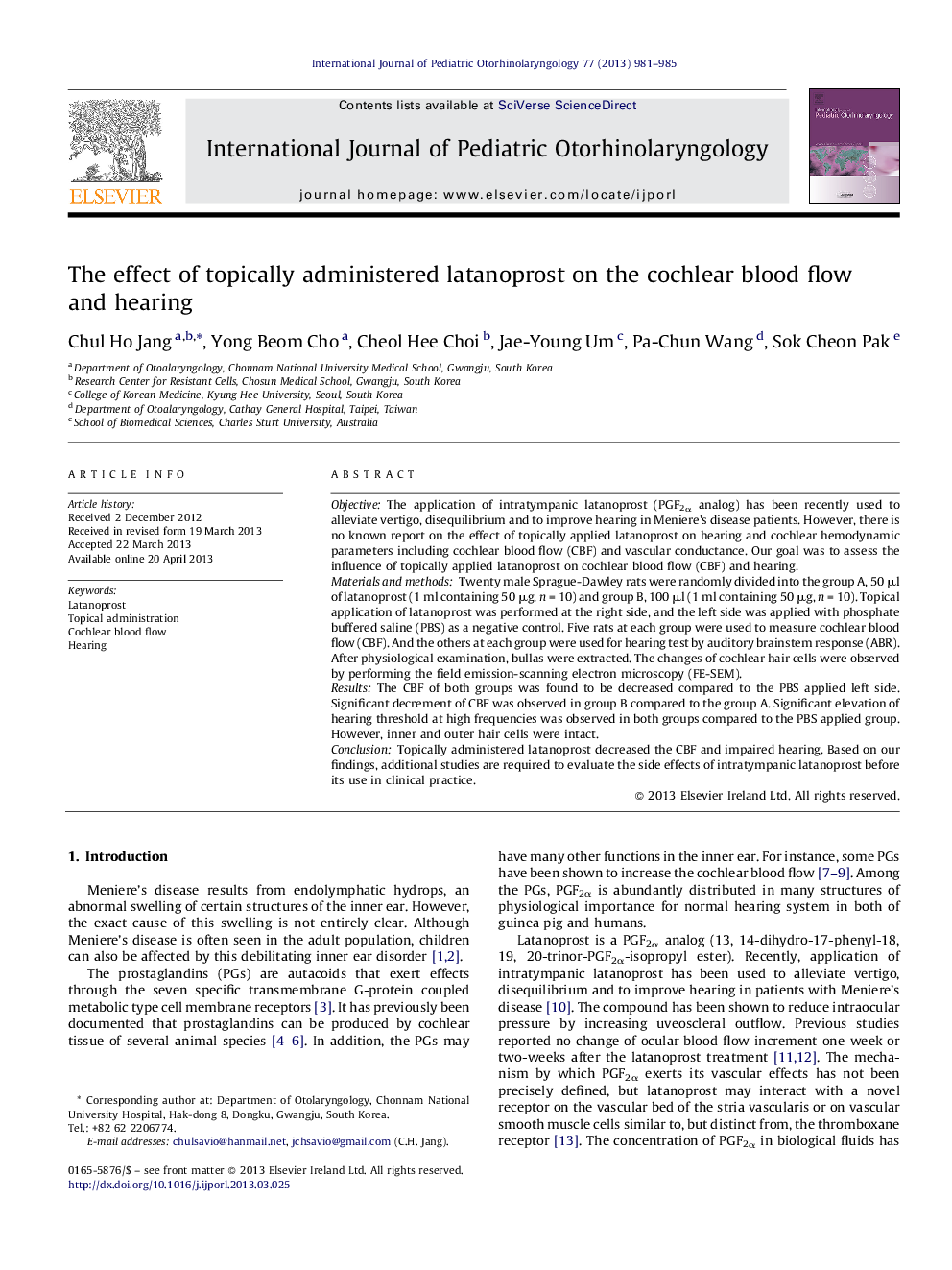| Article ID | Journal | Published Year | Pages | File Type |
|---|---|---|---|---|
| 6213696 | International Journal of Pediatric Otorhinolaryngology | 2013 | 5 Pages |
ObjectiveThe application of intratympanic latanoprost (PGF2α analog) has been recently used to alleviate vertigo, disequilibrium and to improve hearing in Meniere's disease patients. However, there is no known report on the effect of topically applied latanoprost on hearing and cochlear hemodynamic parameters including cochlear blood flow (CBF) and vascular conductance. Our goal was to assess the influence of topically applied latanoprost on cochlear blood flow (CBF) and hearing.Materials and methodsTwenty male Sprague-Dawley rats were randomly divided into the group A, 50 μl of latanoprost (1 ml containing 50 μg, n = 10) and group B, 100 μl (1 ml containing 50 μg, n = 10). Topical application of latanoprost was performed at the right side, and the left side was applied with phosphate buffered saline (PBS) as a negative control. Five rats at each group were used to measure cochlear blood flow (CBF). And the others at each group were used for hearing test by auditory brainstem response (ABR). After physiological examination, bullas were extracted. The changes of cochlear hair cells were observed by performing the field emission-scanning electron microscopy (FE-SEM).ResultsThe CBF of both groups was found to be decreased compared to the PBS applied left side. Significant decrement of CBF was observed in group B compared to the group A. Significant elevation of hearing threshold at high frequencies was observed in both groups compared to the PBS applied group. However, inner and outer hair cells were intact.ConclusionTopically administered latanoprost decreased the CBF and impaired hearing. Based on our findings, additional studies are required to evaluate the side effects of intratympanic latanoprost before its use in clinical practice.
